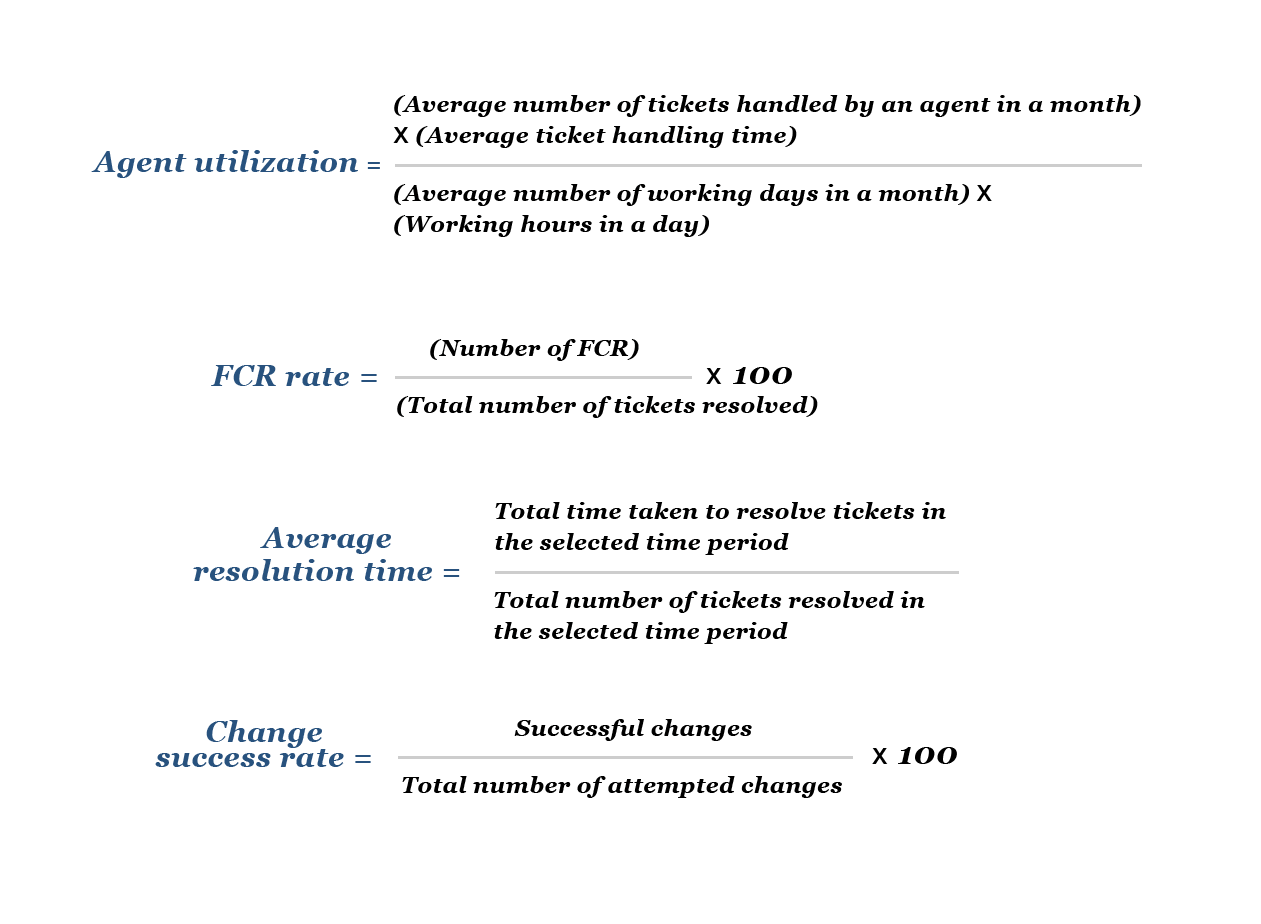- What is help desk software?
- What are the types of help desk software?
- What are the differences between a help desk and a service desk?
- What are the features of help desk software? (Free checklist attached)
- What are the benefits of help desk ticketing software?
- Why is a help desk important for your business?
- How does help desk software work in different industries? (Workflow attached)
- How do you choose help desk software that works for you?
- How do you measure help desk metrics and KPIs?
- What are some best practices to improve your help desk performance?
- What are the benefits of automating routing help desk activities?
- Why do organizations need an integrated help desk software?
- What are the key challenges IT help desks teams are likely to face?
- What's the future of help desk support?
What are some best practices to improve your help desk performance?

Ensure that the IT help desk is the single point of contact (SPOC)
Your help desk should be the only point of contact for all IT-related issues. This reduces confusion among end users, collects all tickets in a central repository, and streamlines help desk processes.
Build a knowledge base
Building and maintaining a knowledge base allows users to find resolutions to common problems, which results in fewer tickets being logged. A knowledge base also helps technicians provide resolutions by assisting them with known solutions.
Archive known resolutions to expand your knowledge base
Solutions to common issues should be archived in the knowledge base after approval by designated technicians.
Set up automation
Automated processes and workflows provide numerous benefits to an IT help desk, like timeliness, accuracy, cost savings, higher efficiency, etc.
Implement a self-service portal
Empowering end users to create their own tickets accurately with the help of self-service portals allows technicians to focus on more critical tasks.
Offer multiple communication channels
Emails from within the application and notifications to both users and technicians help disseminate critical information and maintain transparency in the help desk.
Track and analyze KPIs
You should measure and analyze key metrics and KPIs to understand how well your help desk is performing and build future roadmaps.
Generate and schedule reports
You can use help desk reports to present a quick overview of the state of IT operations to high-level management or to give detailed data points to IT staff and managers.
Implement native asset management
You can manage your organization's hardware and software assets if your help desk application offers native asset management. This leads to better license compliance, purchase management, hardware asset scanning, and tracking.
Utilize native problem and change management
In addition to incident management, your help desk should also offer problem and change management. Bringing them together on the same platform streamlines overall IT operations.
Set up integrations
An IT help desk solution that supports integration with third-party applications has the potential to scale up into a bigger system capable of managing all IT operations from a single application.
Develop SLAs
IT help desks should support SLAs with automatic escalations to ensure that service is consistently delivered on time.
Offer technician training
Technicians should be trained regularly to keep them up-to-date with the latest technologies, best practices, and company policies. Also, feedback from technicians should be collected and considered to balance out each technician's workload.
Implement a multi-tier architecture
Structure your help desk in a multi-tier architecture to maximize its efficiency. This structure supports a better flow of tickets, with complex issues finding quick resolution by higher level technicians and simpler issues being serviced at lower levels.
Send out end-user surveys
Collecting feedback from end users helps organizations understand the pain points users face and paves the way for continuous service improvement (CSI). You can administer surveys either periodically or every time a ticket is closed.
How do you measure help desk metrics and KPIs?

KPIs are measurable values that help you assess the success of a particular activity. Any organization with an IT help desk should always have a set of KPIs dedicated toward monitoring its health, operational efficiency, and output.
The most important reasons to measure help desk KPIs are listed below:
Setting tactical help desk goals
Similar to any function in an organization, every help desk has its own goals. KPIs help system administrators and managers visualize and quantify these goals, making it easier to understand, communicate, and achieve them.
For example, an IT help desk with a goal to resolve as many tickets as possible can measure its turnaround time and set a suitable target value.
Supporting strategic business goals
The output of a business is the sum total of the output of all its individual activities. The help desk, being an important support function in an organization, contributes significantly to a business's output. By setting and tracking KPIs, help desks can ensure they're aligned with business goals.
For example, if the goal of a business is to minimize costs, it would be useful to measure and minimize the cost of handling each ticket.
What gets measured gets managed
KPIs help manage IT help desks better by quickly identifying pain points and bottlenecks. Once issues are identified, admins can address them promptly.
Focused monitoring
With a multitude of data points and qualitative factors, it's easy to lose focus of what exactly needs to be measured in an IT help desk.
This might have two undesirable consequences: wasted resources on measuring irrelevant factors and/or missing out on measuring the relevant ones. Setting and tracking KPIs ensures that all, and only, relevant factors are measured.
Achieving and maintaining optimum efficiency
It's easier for managers to understand and achieve quantifiable targets. So if each KPI is set towards optimizing the help desk ticketing processes to a certain level, it's simpler for help desk teams to achieve that level. It's also easier to maintain that level since it can be done by maintaining specific metrics.
Simply put, setting KPIs provides a systematic approach towards optimizing help desk operations.
Building roadmaps
Knowing the bottlenecks and target values for KPIs can help managers build short-term roadmaps.
For example, if the help desk has a high average turnaround time, then the immediate task at hand is to minimize it. Similarly, if they have a target of providing timely service, then their roadmap will be to minimize SLA violations.
As for implementing KPIs, the most basic requirement is knowing what to measure. While there are certain common KPIs that every help desk can track and harvest value from, it's also useful to know how to determine custom KPIs.
A simple four-step process for this is described below:
Identify relevant business goals
As discussed earlier, KPIs are effective at aligning IT help desks with overall business goals. So the starting point of determining KPIs is to understand the business goals that are supported by your help desk and then identify the factors that impact those goals.
Identify key enablers and impact areas
Once you've identified the business goals your help desk supports, the next step is to understand which enabler, medium, or area those goals impact. In general, there are three key enablers and impact areas for an IT help desk: processes, technicians, and technology.
In the example above, cutting costs is largely dependent on staff size, so that business goal is likely to affect technicians. In some cases however, cutting costs can affect technology as well, for instance if the organization decides to downgrade to cheaper infrastructure or software.
Identify critical success factors (CSFs)
A CSF is an actionable statement that clearly states what needs to be done or what is expected. A CSF defines when an activity can be considered successful. In the previous example, a CSF could be "Cost of handling tickets should be reduced by 50 percent."
Determine KPIs
By combining your findings from the above steps, you can derive KPIs and give each KPI a target value. Continuing the cost-cutting example from above, you could define a KPI as the "average cost of handling one ticket" and set the target value to half of the existing cost.
As a reference, some common KPIs for help desks are listed below:
| Key impact area | KPI |
|---|---|
| Technicians | Staff responsiveness |
| Technicians | Turnaround time |
| Technicians | Agent utilization |
| Technicians | First contact resolution (FCR) rate |
| Technicians and processes | Cost per ticket |
| Technicians and processes | Average resolution time |
| Processes | Ability to reach a technician |
| Processes | SLA violations |
| Processes | High-priority tickets backlog volume |
| Processes | Tier 1 resolutions |
| Technology | Ease of communication |
| Technology | Infrastructure stability |
| Technology and processes | Ease of raising a ticket |
| Technicians, processes and technology | User satisfaction |
| Technicians, processes and technology | Change success rate |
You can determine some of the above KPIs using simple calculations. Here are a few key KPI formulas for reference:

IT help desk software evaluation kit
An exclusive package of a feature checklist and a request for proposal (RFP) template
-
Feature checklist
Comprehensive list of must-have features that you can use as a benchmark
-
RFP template
A guide to a great RFP that helps you get all the information you need about a vendor





